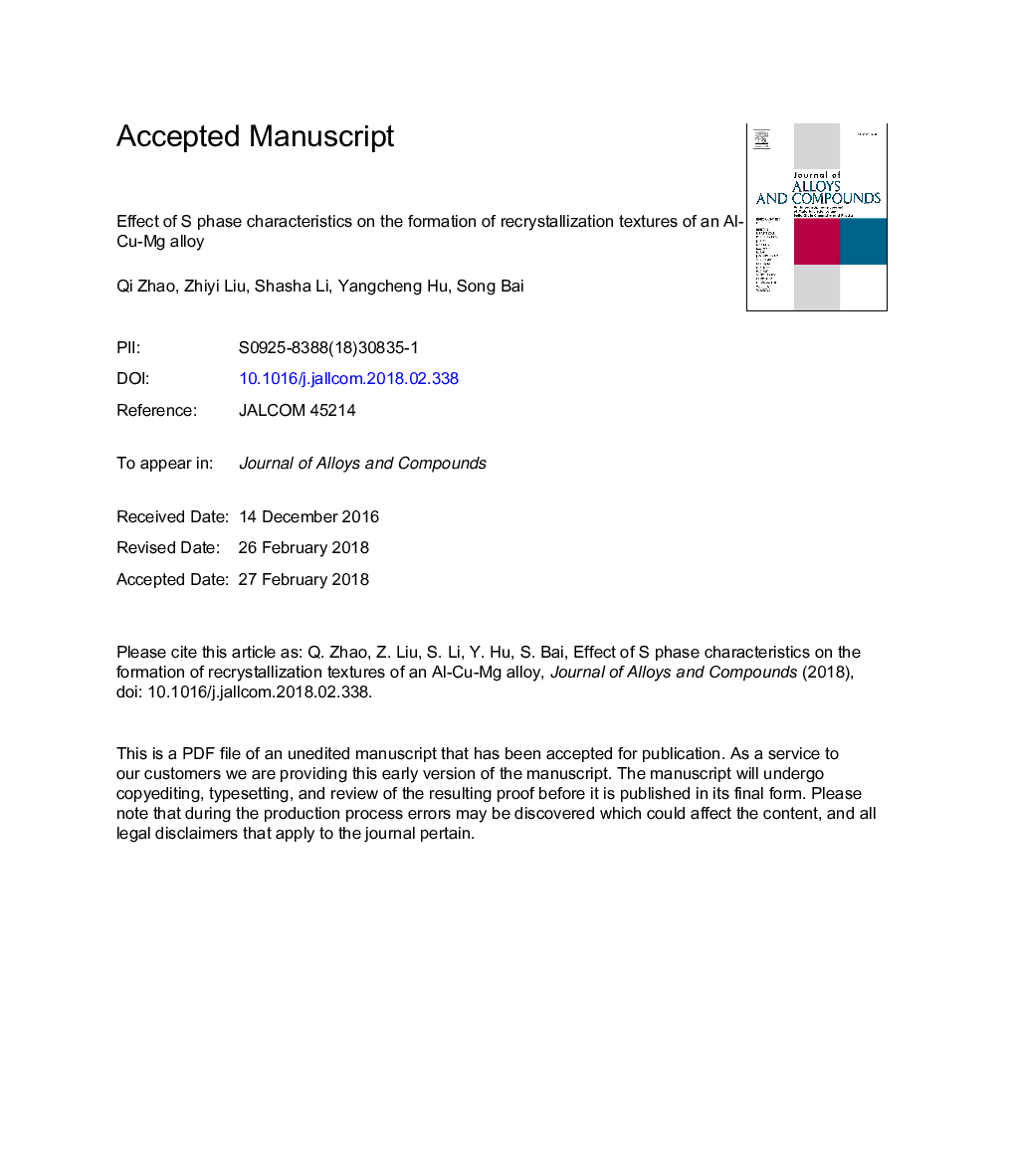| Article ID | Journal | Published Year | Pages | File Type |
|---|---|---|---|---|
| 7992291 | Journal of Alloys and Compounds | 2018 | 32 Pages |
Abstract
The effect of S(Al2CuMg) phase size on the formation of texture in an Al-Cu-Mg alloy during annealing has been systemically examined using three dimensional Orientation Distribution Functions (ODFs), Electron Back Scattered Diffraction (EBSD), Scanning Electron Microscopy (SEM) and Transmission Electron Microscopy (TEM). The results showed that in the region of sheet with the uniform fine S phase precipitates (1-4.5â¯Î¼m in size), Brass texture mainly transformed into Goss texture after annealing at 320â¯Â°C for 4â¯h. The preferred growth of Goss texture was attributed to the high mobility of Σ9 boundary between Brass and Goss grain. However, in the region of sheet containing intense coarse S phase precipitates (1-8â¯Î¼m), Brass texture mainly transformed into r-Goss texture after the same annealing condition. The large S phases with size of 4.5-8â¯Î¼m, were suggested to be responsible for the formation of r-Goss texture. Also, due to the particle stimulated nucleation (PSN) effect caused by these large S phases (4.5-8â¯Î¼m), the boundaries between Brass and r-Goss grains were non-CSL boundaries. Instead, the preferred growth of r-Goss grain was ascribed to the higher mobility of r-Goss grain boundary with misorientation angle of 26-43°, than that of low (<26°) and high (>43°) angle boundaries.
Keywords
Related Topics
Physical Sciences and Engineering
Materials Science
Metals and Alloys
Authors
Qi Zhao, Zhiyi Liu, Shasha Li, Yangcheng Hu, Song Bai,
